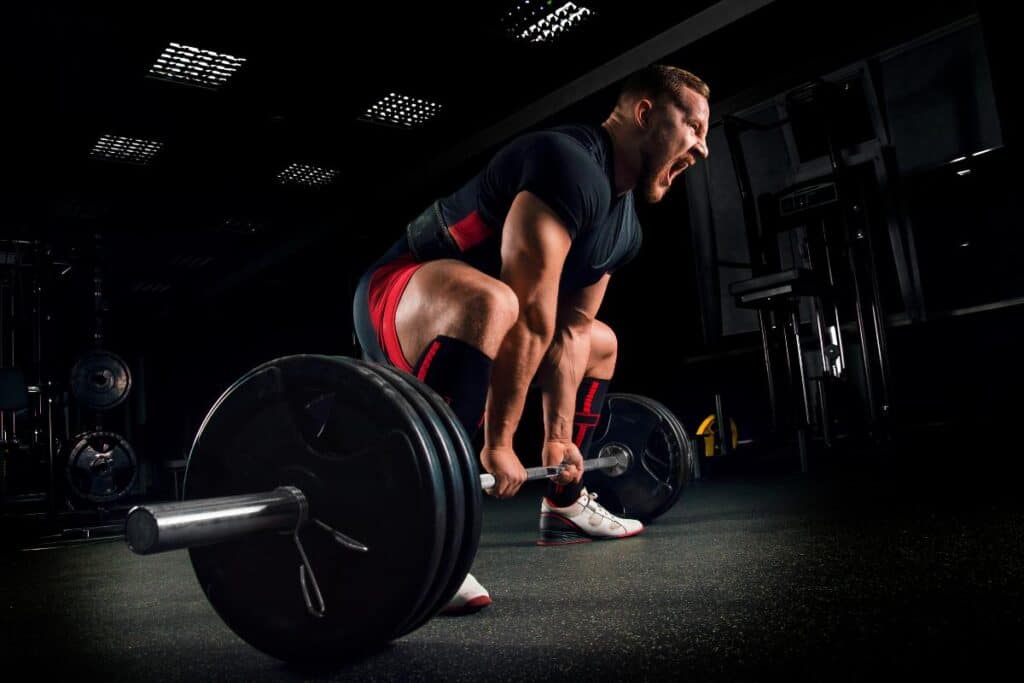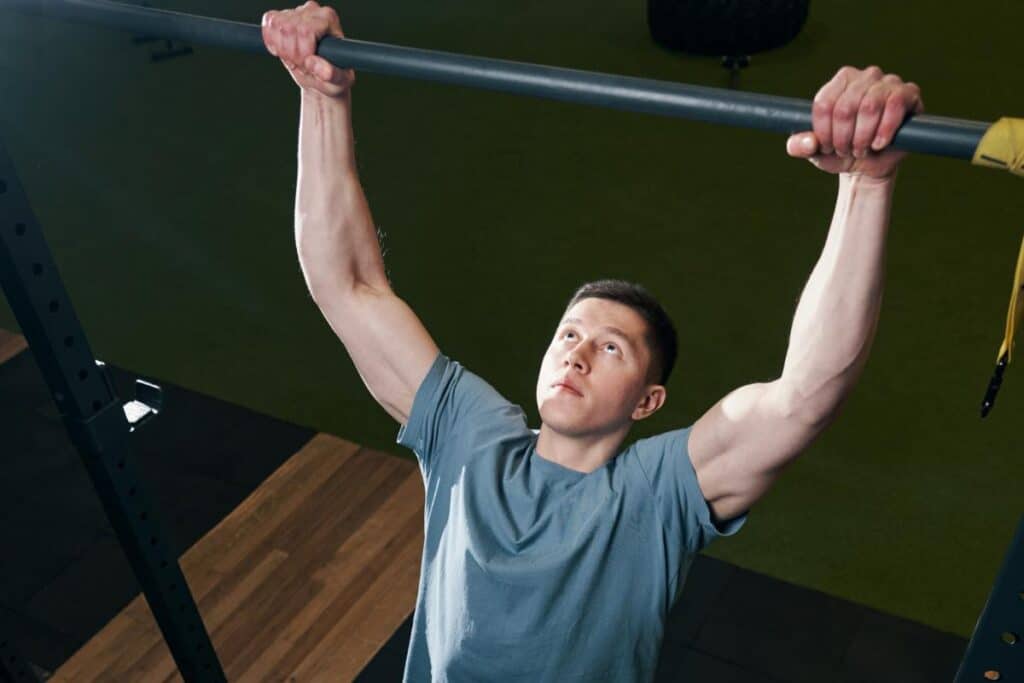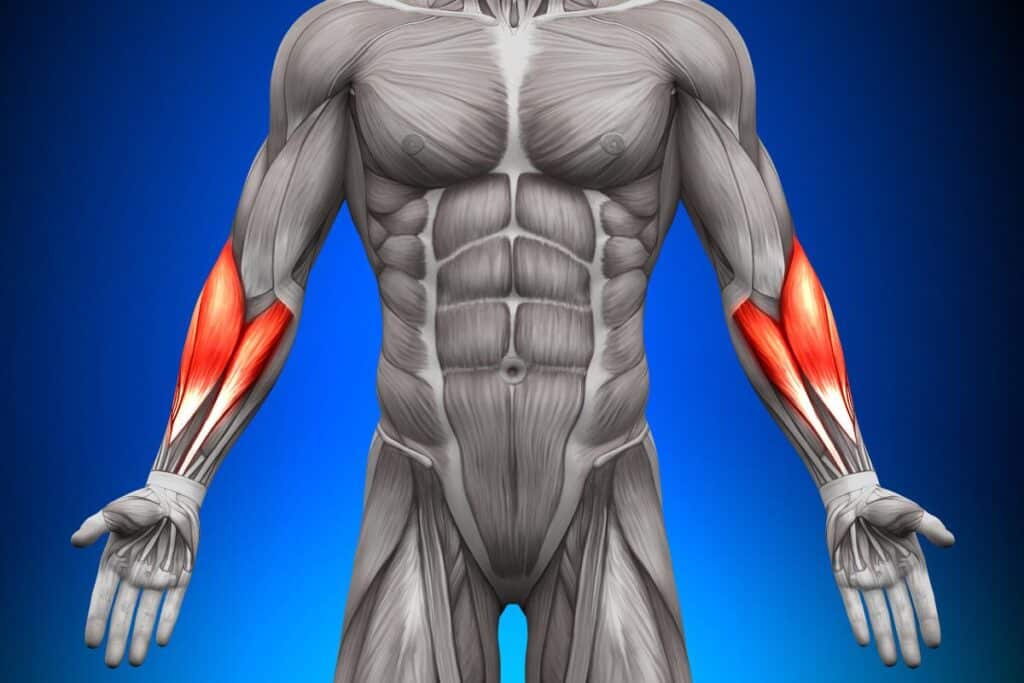In the realm of fitness and bodybuilding, forearms often don’t receive the spotlight they deserve. Yet, these muscles play a crucial role in overall strength and aesthetics. Trained forearms not only enhance the visual appeal but also contribute significantly to grip strength, which is essential for a variety of exercises. In this article, we will delve into the anatomy of the forearm, the benefits of training these muscles, effective exercises to train forearms for optimum results, as well as provide a video on performing a trained forearms workout.
Understanding Forearm Anatomy
The forearm consists of several smaller muscles, including the flexors and extensors. The flexors are responsible for curling the wrist toward the forearm, while the extensors work on straightening the wrist. A well-rounded forearm workout targets both these muscle groups for balanced development.
Benefits of Training Forearms

Enhanced Grip Strength-
Strong forearms improve your grip, which is crucial for exercises like deadlifts and pull-ups. A solid grip translates to better performance and reduced risk of injuries.
Improved Aesthetics-
Well-developed forearms add to the symmetry and balance of the upper body, giving a more complete and toned look.
Better Functional Strength-
Forearms play a key role in daily activities that involve lifting, holding, or pulling, making their strength practical and functional.
Effective Exercises to Train Forearms

1. Wrist Curls-
Sit on a bench with your forearms resting on your thighs, palms up. Hold a dumbbell in each hand and curl your wrists upward. This exercise primarily targets the wrist flexors.
2. Reverse Wrist Curls-
Similar to wrist curls but with palms facing down. This exercise works the extensor muscles.
3. Hammer Curls-
Stand with your arms at your sides, holding dumbbells with a neutral grip (palms facing each other). Curl the weights while keeping your palms facing each other, effectively engaging the brachioradialis muscle of the forearm.
4. Farmer’s Walk-
Hold heavy weights in each hand and walk for a set distance or time. This exercise is excellent for improving overall grip strength.
5. Dead Hangs-
Hang from a pull-up bar for as long as possible. This not only strengthens the forearms but also improves grip endurance.
Training Tips
- Frequency: Include forearm exercises in your routine 2-3 times a week.
- Intensity: Use weights that allow you to perform exercises with proper form but are challenging enough to fatigue the muscles.
- Variety: Rotate these exercises to target the muscles from different angles and avoid monotony.
- Rest: Allow adequate rest between forearm workouts to promote muscle recovery and growth.
Conclusion
Training forearms should be an integral part of your fitness regime. Not only do they contribute to a more balanced and aesthetically pleasing physique, but they also enhance functional strength and improve performance in other exercises. By incorporating a variety of exercises and adhering to proper training principles, you can effectively train your forearms for strength and visual appeal.
Remember, the journey to stronger forearms is not just about lifting weights; it’s about consistent effort, proper technique, and a balanced approach to fitness. Embrace the challenge, and watch as your forearms transform, adding a new dimension to your overall strength and appearance.
Key Take Aways –
Here are the key takeaways from Trained Forearms: Maximizing Strength and Aesthetics through Targeted Training:
- Forearm Anatomy Importance: Understanding the anatomy of the forearm, including the flexors and extensors, is crucial for effective training.
- Enhanced Grip Strength: Training forearms improves grip strength, which is essential for better performance in various exercises like deadlifts and pull-ups.
- Aesthetic Improvement: Well-developed forearms contribute to the overall symmetry and aesthetics of the upper body.
- Functional Strength Benefits: Strong forearms are beneficial in daily activities that involve lifting, holding, or pulling.
- Key Forearm Exercises:
- Wrist Curls: Target the wrist flexors.
- Reverse Wrist Curls: Focus on the extensor muscles.
- Hammer Curls: Engage the brachioradialis muscle.
- Farmer’s Walk: Improve overall grip strength.
- Dead Hangs: Strengthen forearms and improve grip endurance.
- Training Recommendations:
- Frequency: Train forearms 2-3 times a week.
- Intensity: Use challenging weights that still allow proper form.
- Variety: Include different exercises to target muscles from various angles.
- Rest: Ensure adequate rest between workouts for muscle recovery.
- Holistic Approach: The journey to stronger forearms involves consistent effort, proper technique, and a balanced fitness routine.
- Overall Impact: Strengthening forearms not only enhances physical appearance but also contributes significantly to functional fitness and exercise performance.
For more insightful fitness articles and tips, visit TF Clark Fitness Magazine. Don’t forget to check out our social media for daily inspiration and updates on bodybuilding, health, and fitness!





I’m really happy that I can read everything in one place because this is my first brief visit to this place.
Nice post. I learn something totally new and challenging on websites
Your words have resonated with us and we can’t wait to read more of your amazing content. Thank you for sharing your expertise and passion with the world.